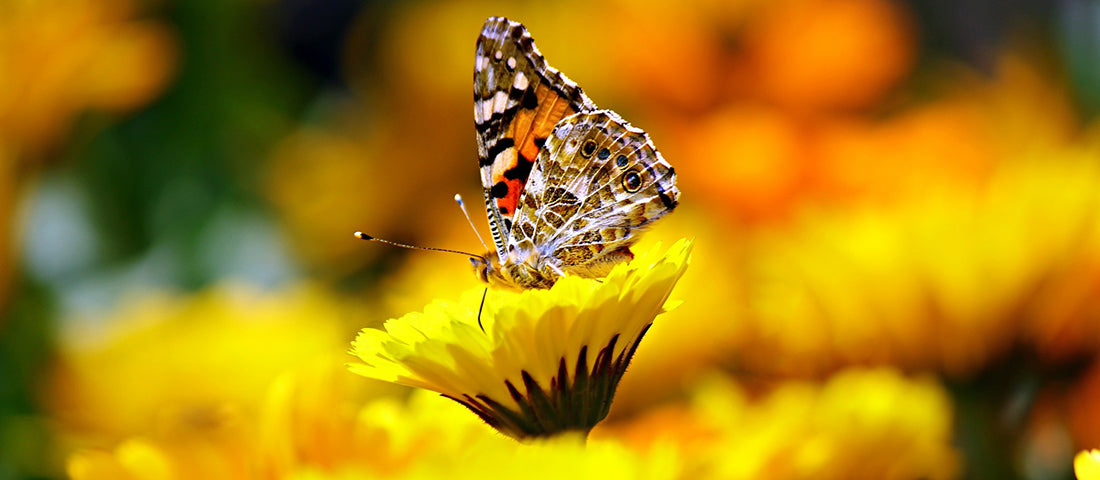
The sight of brightly-coloured butterflies dancing through summer flowers is one of the many joys of this time of year. However, butterflies, like so much of our wildlife, are under pressure.
Butterflies and moths are key indicators of the health of an ecosystem, as they react very quickly to changes in their environment. And in the UK, populations have dropped at an alarming rate since the 1970s.
There are 59 species of butterfly regularly seen in the UK, according to Butterfly Conservation, of which 57 are resident, and two – the painted lady and the clouded yellow – migrate from mainland Europe each year to breed.

Of the 59 butterfly species seen in the UK, a shocking 28 are on 2021’s Red List of British butterflies. That’s right: nearly half of our butterfly species are at risk of extinction.

So what can we as gardeners do to help? Firstly, we can incorporate some butterfly-friendly plants into our outdoor spaces. Butterfly favourites include: verbena, hebe, sedum, lavender, marjoram, and buddleia – which doesn’t have to be large and straggly, as small varieties around 1m high are available. Read more about power plants for pollinators elsewhere in our Journal.
Secondly, we can help count butterflies in Butterfly Conservation’s Big Butterfly Count 2022, which this year runs until Sunday 7 August.
The Big Butterfly Count started in 2010, and it’s now the world's biggest survey of butterflies. It’s a citizen science survey on a grand scale. Last year more than 107,000 people took part, contributing 152,039 counts of butterflies and day-flying moths from across the UK. The results from these annual counts give a snapshot of how butterflies in the UK are faring – which in turn is a useful way to take nature’s pulse, as Butterfly Conservation puts it.

To take part, all you need to do is count the butterflies you see in 15 minutes, and how many of each species. Pick a sunny day, and then just sit and watch the butterflies which visit you during your count. What could be nicer?! And it’s a great project to get the kids involved in.
You can count anywhere – gardens, parks, woodland, countryside, out on a walk. You can count several times in different places, if you like. To make things simple, there’s a handy identification chart to download, to show you the species you might see.
Report your results on the Butterfly Conservation website. There’s an interactive map, so you can see the results grow as the count progresses.
This year why not help Butterfly Conservation take nature’s pulse? Count the butterflies in your garden, allotment, balcony or patio by 7th August – and be part of this huge citizen science project to help our cherished wildlife!

